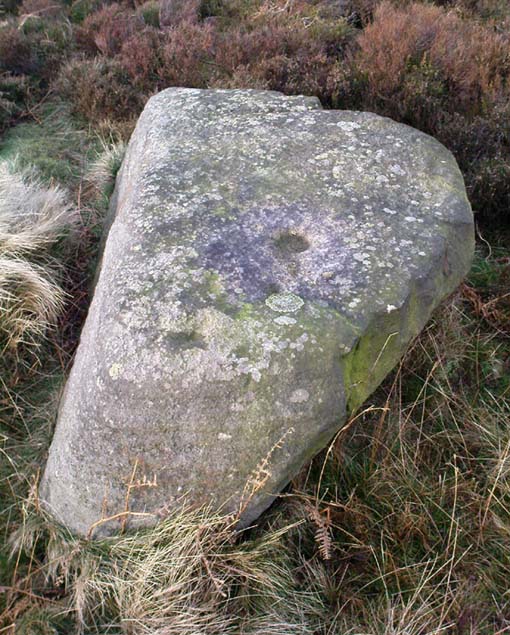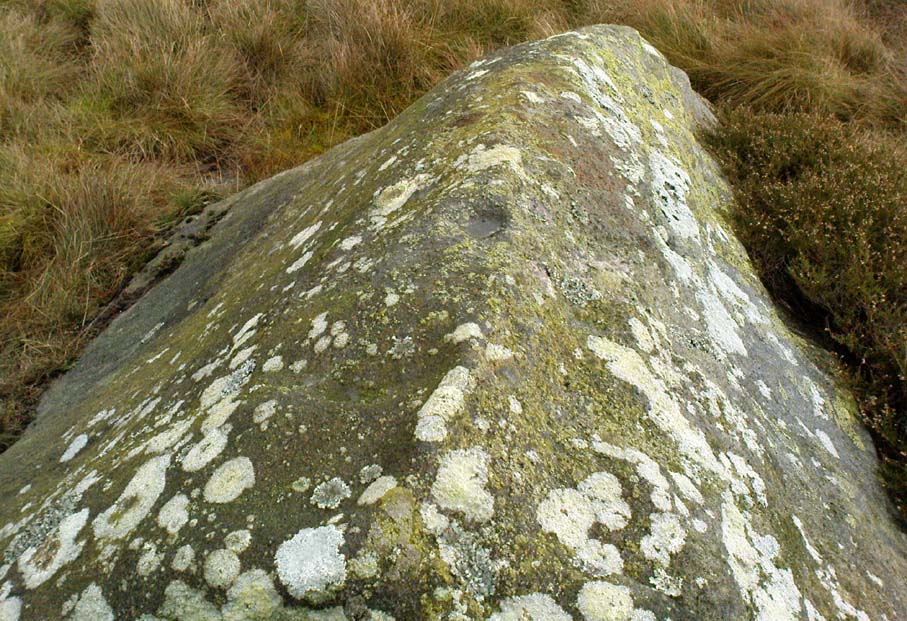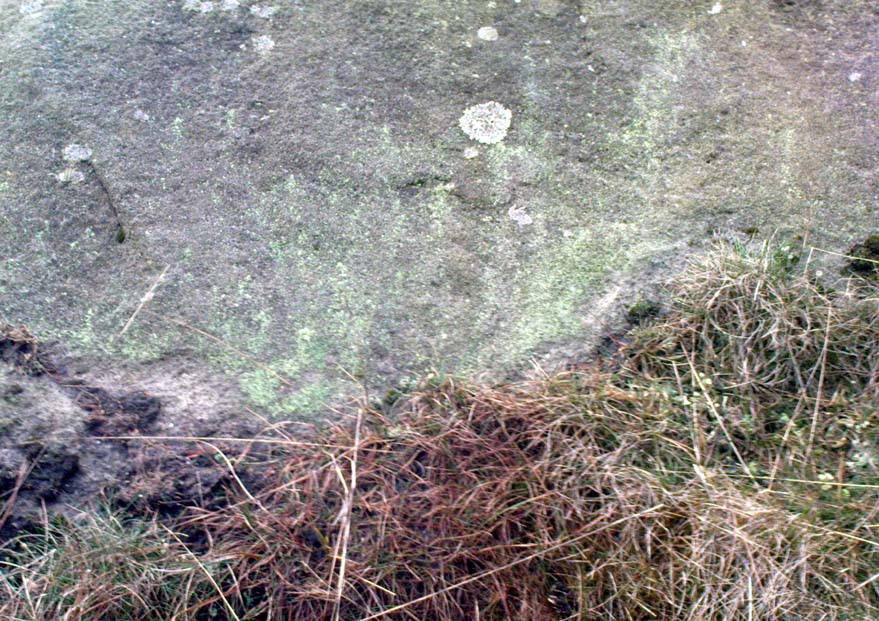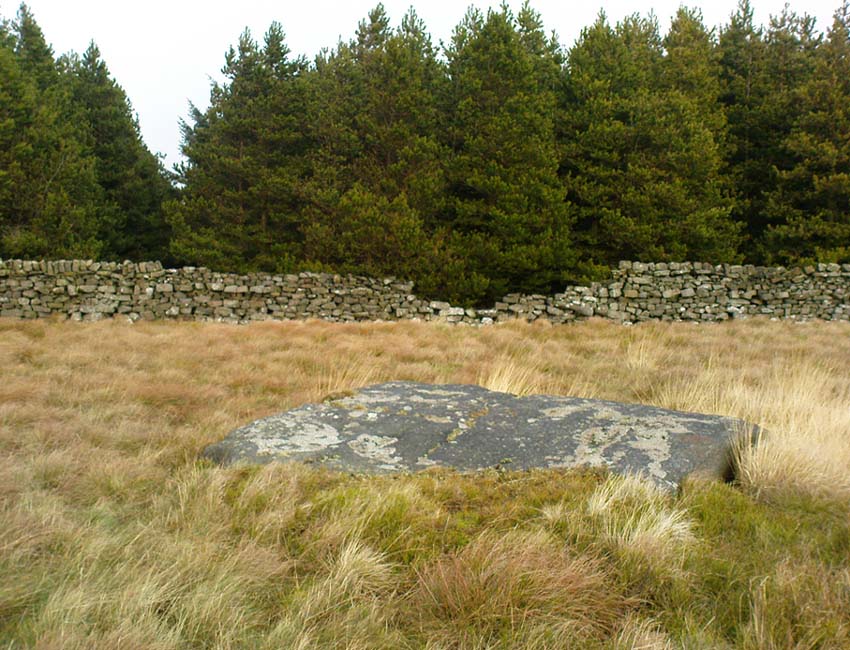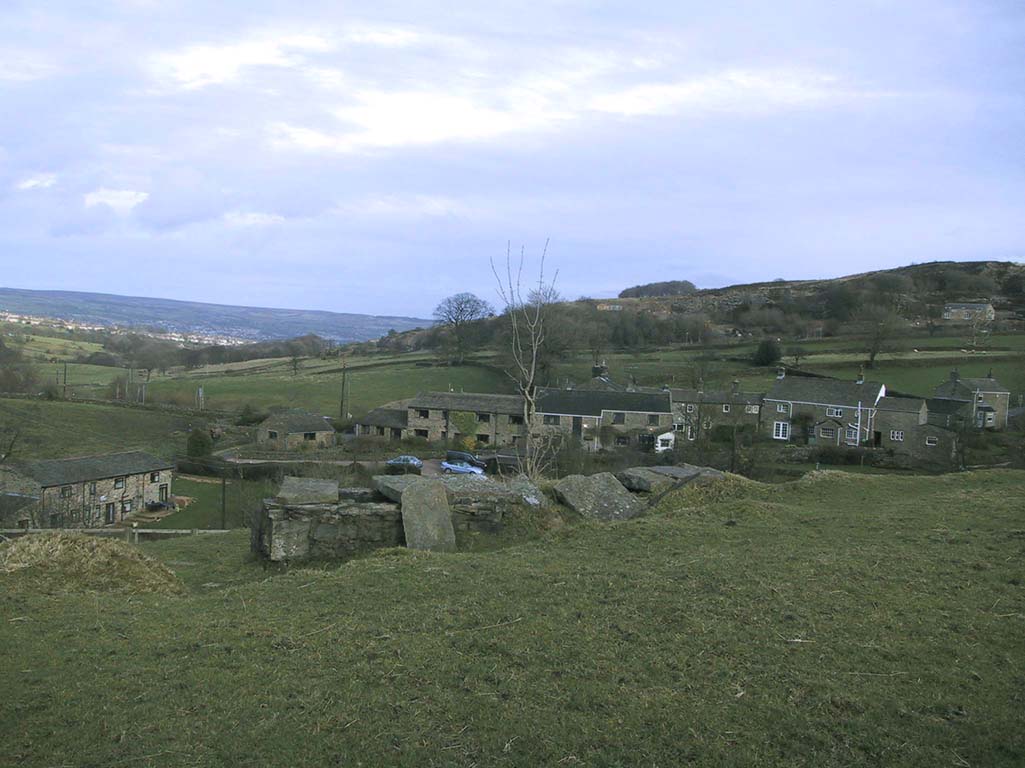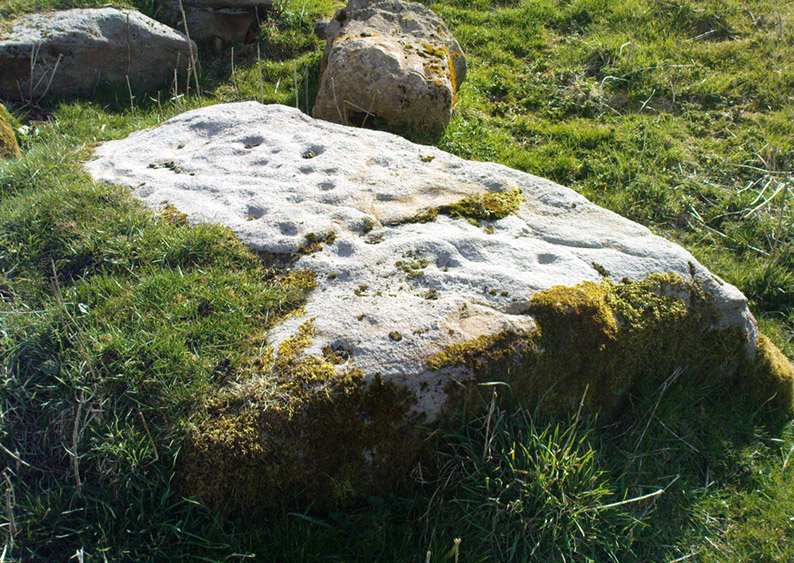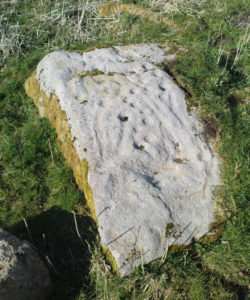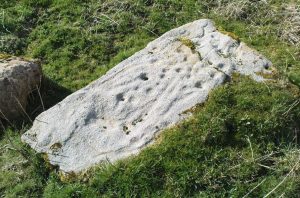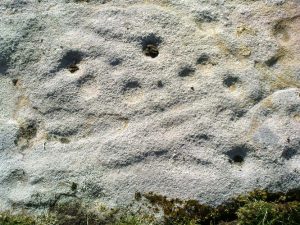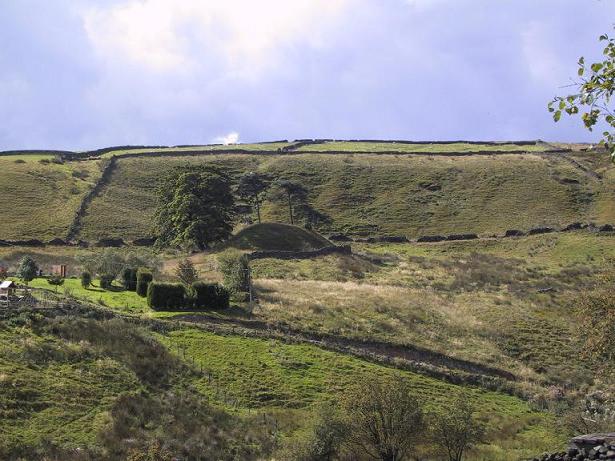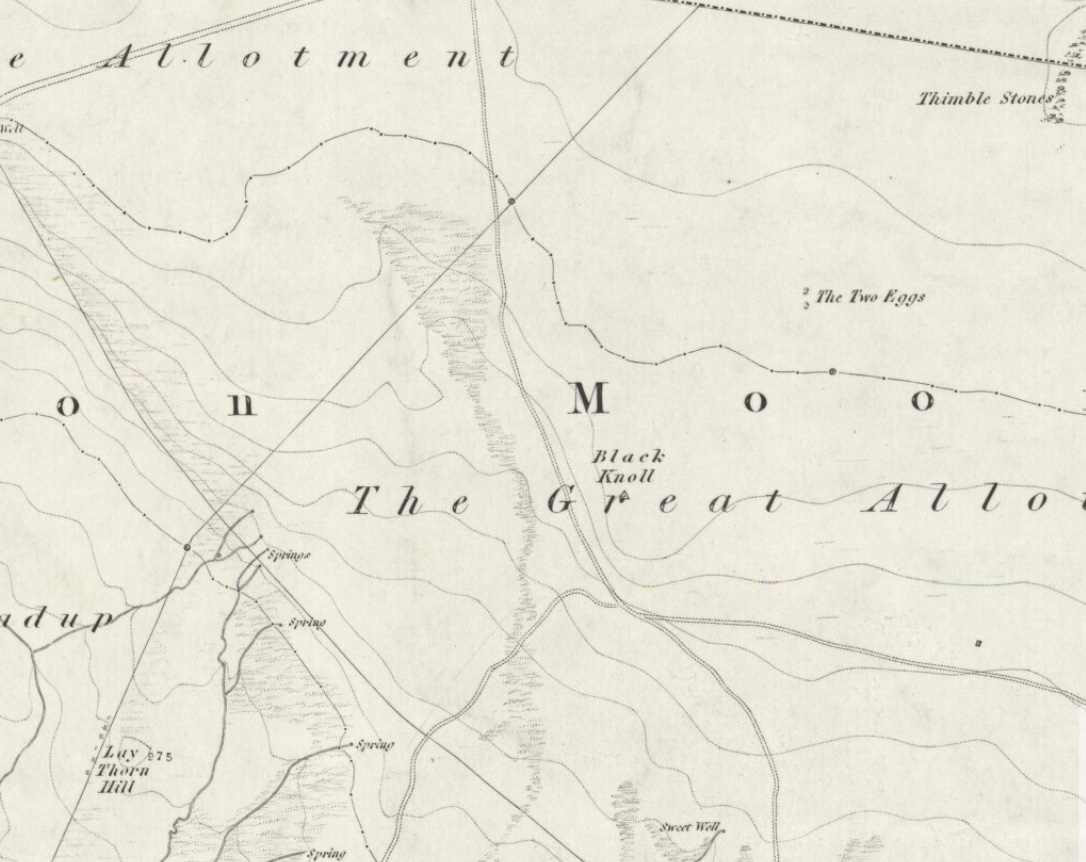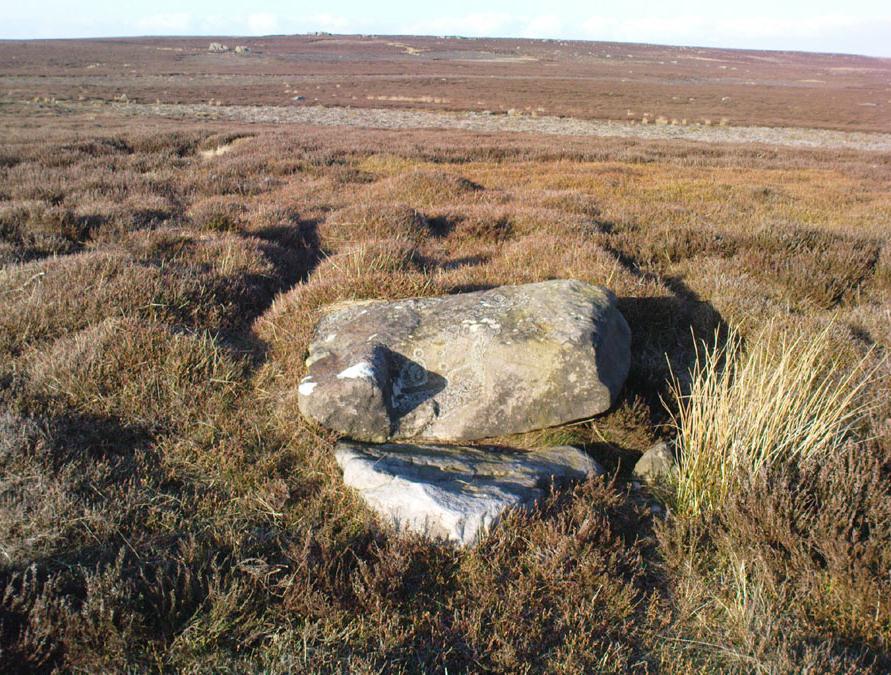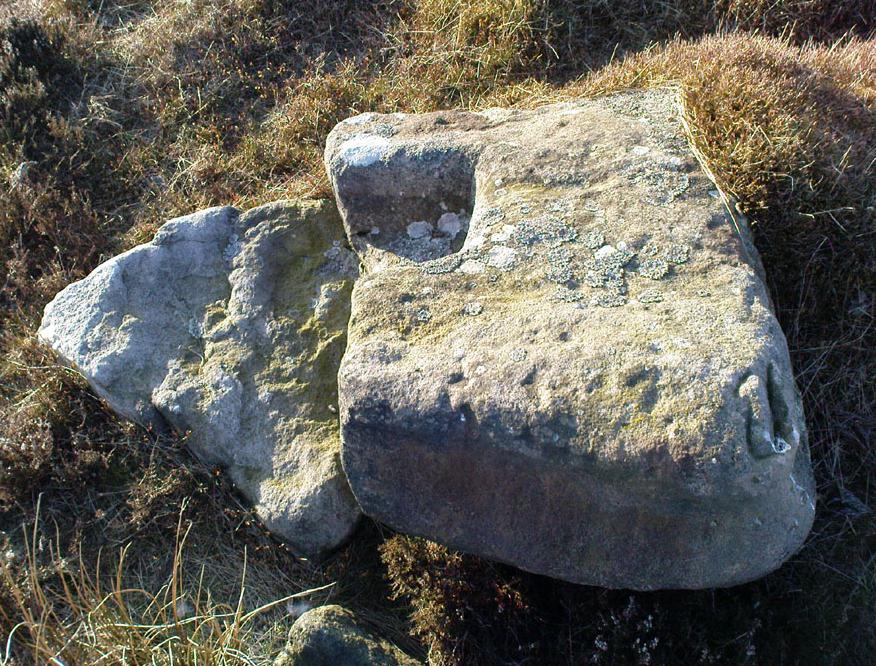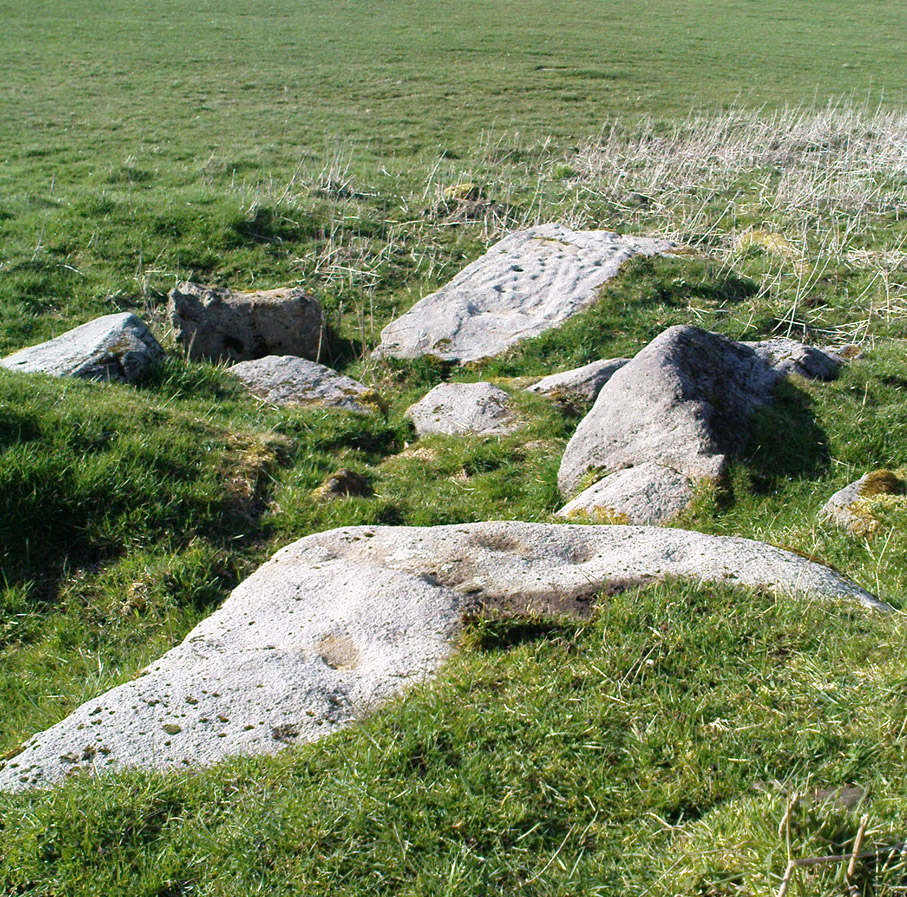Cup-Marked Stone: OS Grid Reference – SE 07782 43878
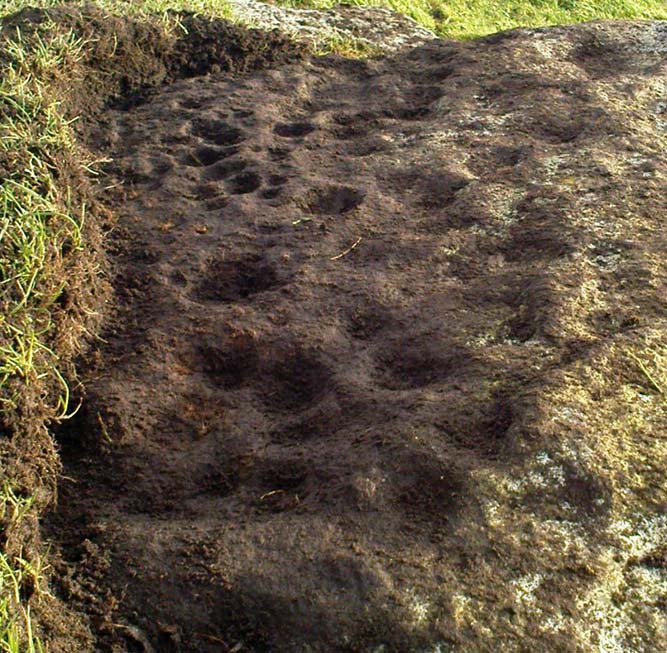
From the B6265 valley road between Bingley and Keighley, just near Riddlesden Hall, take the road up and over the canal into Riddlesden, bearing left up past West Riddlesden Hall and up Banks Lane. As you reach the T-junction at the top, where you hit the Silsden Road that goes round the moors, park up. Turn left and walk along the Silsden Road, counting the field on your left, moorland-side. At the fourth, go through the gate uphill, keeping to the walls on the right and going through the second gate up. Walk straight on for nearly 130 yards (119m) where you’ll see this group of three earthfast rocks right next to each other.
Archaeology & History
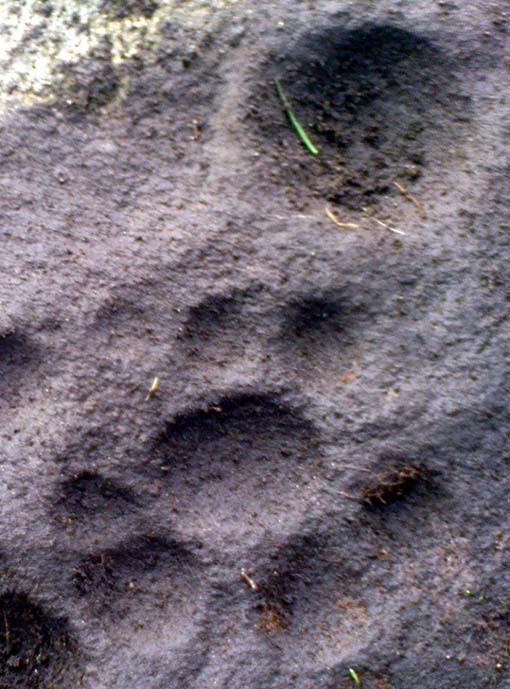
Not included in any pervious archaeological survey, this is a fine cup-marked stone with at least 25 cups etched into this average-sized rock, halfway up this field of stones. When this carving was rediscovered on Friday, 6 January, 2012, it was noticed that a couple of cup-marks were peeking out from the edge of the grasses covering the rock — and so a careful and gradual uncovering of the rock itself was slowly exposed and see if the initial suspicions of an authentic carving were correct. Thankfully it turned out right!
When first spotting this, I undercovered more beneath the soil, although it’s not clear how much of this stone is covered in carvings, as the Earth has grown considerably over the top of it. There is also what seems to be a geological curiosity on the eastern section of the stone; whereby some apparent ‘cups’ seem to have been created by natural process. However, these have been added to by human hands at a distant time, long ago. The cup-marks themselves vary in size, from small ones barely an inch across, to larger ones measuring some 3-inches in diameter; and oddly, the cups seem to get larger the further west you travel across the stone! More research is needed at this site to ascertain the a more complete image of the petroglyph.
…to be continued…
© Paul Bennett, The Northern Antiquarian
